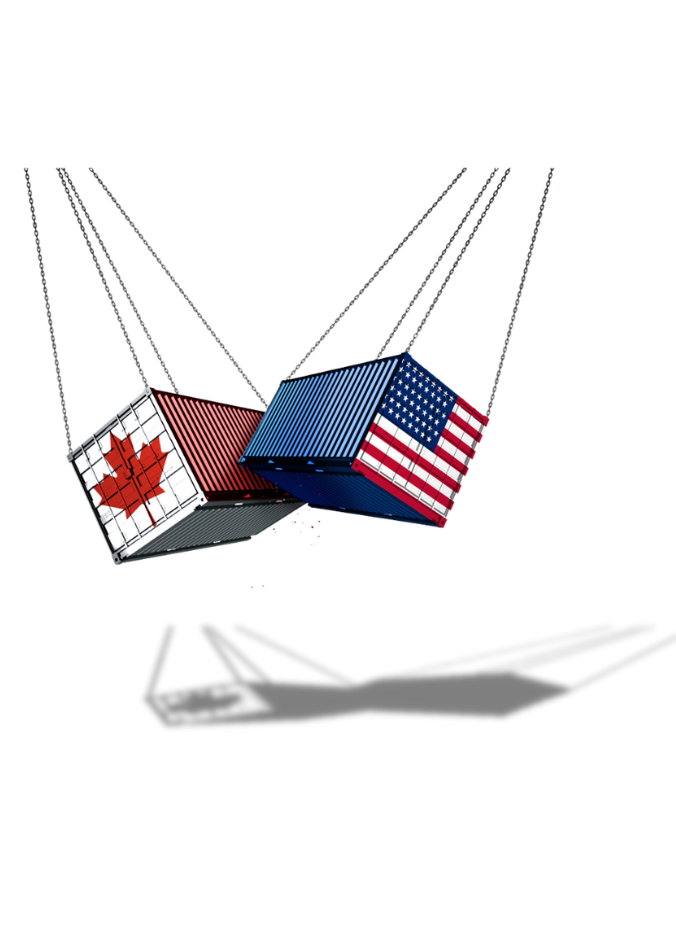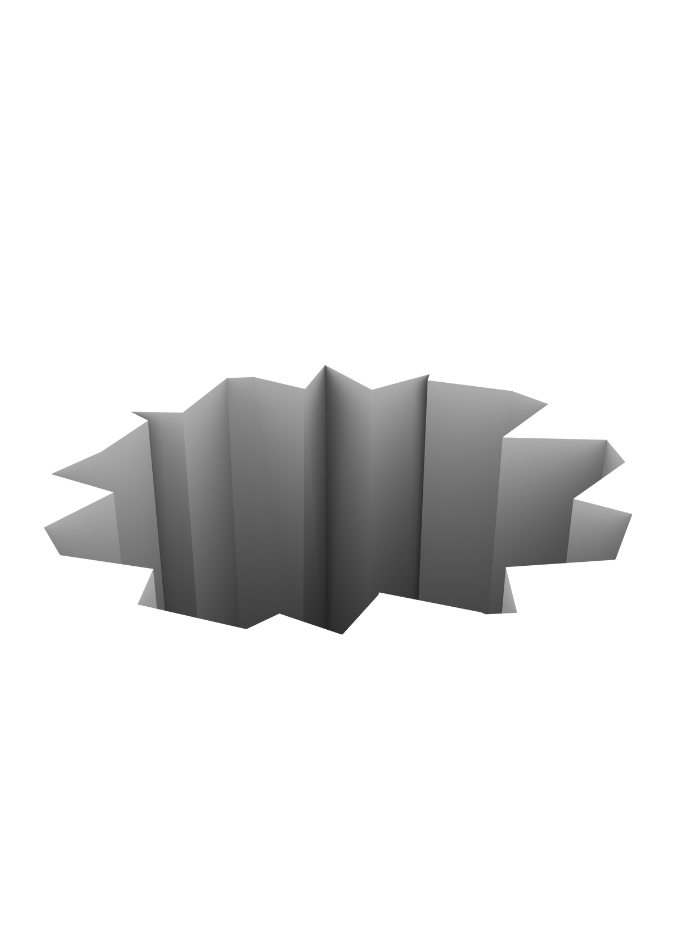
Q&A: The Economic Reality of U.S. Tariffs with Charles St-Arnaud
The relationship between Canada and the U.S. has always been intertwined with trade, but today, Canadian businesses are facing an unsettling new reality—the looming impact of U.S. tariffs and the uncertainty that comes with them.
To explore what this means for the Canadian economy, TEC Canada’s Manager of Strategy and Research, Colten Esser, sat down with Charles St-Arnaud, Chief Economist at Alberta Central, for a deep dive into the current trade environment and its impact on businesses across the country.
Q&A: The Economic Reality of U.S. Tariffs with Charles St-Arnaud

The relationship between Canada and the U.S. has always been intertwined with trade, but today, Canadian businesses are facing an unsettling new reality—the looming impact of U.S. tariffs and the uncertainty that comes with them.
To explore what this means for the Canadian economy, TEC Canada’s Manager of Strategy and Research, Colten Esser, sat down with Charles St-Arnaud, Chief Economist at Alberta Central, for a deep dive into the current trade environment and its impact on businesses across the country.

The State of Tariffs: What’s Happening Now?
The uncertainty surrounding tariffs has already begun to take its toll, even before new measures are finalized. Businesses are delaying hiring, re-evaluating investment strategies, and in some cases, considering shifting operations out of Canada altogether.
“We already see businesses putting a hold on hiring and investment,” Charles explained. “Some companies are even reconsidering their Canadian presence entirely, opting for the U.S. instead.”
While a temporary reprieve has been granted until early April, the long-term outlook remains clouded. The unpredictability of tariffs—how high they will be, which sectors will be affected, and how long they will last—is creating a chilling effect on the Canadian economy.
“The uncertainty may actually be worse than the tariffs themselves,” he cautioned. “At least with tariffs, you know what you’re dealing with, and you can make decisions accordingly. But right now, businesses are left guessing.”
Understanding the Different Faces of U.S. Trade Policy

Charles St-Arnaud outlined several factors influencing U.S. trade decisions, particularly under former President Donald Trump, should he return to office.
“There are at least four ‘versions’ of Trump when it comes to trade,” he explained:
- Transactional Trump – Using tariffs as leverage to extract concessions.
- Isolationist Trump – Prioritizing American self-sufficiency over global cooperation.
- Imperialist Trump – Seeking access to foreign resources through economic pressure.
- Industrialist Trump – Using tariffs to push investment and manufacturing back into the U.S.
“He doesn’t necessarily have a singular vision—he’s applying pressure in multiple areas, hoping one of them will deliver a win,” Charles said.
Canada, which exports nearly 25% of its GDP to the U.S., is highly vulnerable to these shifts. “Trump knows that Canada is reliant on the U.S. market. He also knows that by imposing tariffs, he can create economic pain and force concessions.”


Who is Most at Risk?
Not all regions of Canada will feel the impact equally. Ontario and Quebec, with their strong manufacturing bases, are the most exposed.
“Ontario, in particular, will bear the brunt of the impact,” Charles said. “It exports about 25% of its GDP to the U.S., and much of that is in manufacturing—an industry highly sensitive to price changes.”
Quebec is similarly at risk, though slightly less so because its economy is more diversified. Meanwhile, Alberta and New Brunswick, which depend heavily on energy exports, could see more moderate effects since oil and gas face lower tariff rates than manufacturing goods.
“Manufacturing is far more price-sensitive than energy,” he explained. “So if tariffs hit that sector hard, job losses and economic downturns in Ontario and Quebec will be much steeper.”
A Wake-Up Call for Canada?

Despite the risks, Charles St-Arnaud believes the current crisis could serve as a catalyst for positive change in Canada’s economic policies.
“If there’s a silver lining, it’s that this moment might finally push us to address long-standing economic challenges,” he said. “For decades, we’ve talked about productivity, interprovincial trade barriers, and market diversification—but we haven’t acted fast enough. This might be the wake-up call we need.”
For example, Canada’s reliance on the U.S. has historically made it difficult to justify investments in infrastructure that would open up new trade opportunities with Asia, Europe, and other global markets. Now, with tariffs looming, businesses and policymakers may have a new incentive to invest in ports, railways, and alternative trade routes.
“We’ve been slow to act because, frankly, the U.S. was a comfortable market. But that comfort is disappearing,” he said. “The question now is: will we use this moment to reposition ourselves for long-term economic resilience?”

What Should Business Leaders Do?

For leaders of small and medium-sized businesses, the road ahead will be challenging, but there are steps they can take:
1. Be Proactive in Advocacy – “Business leaders should engage with policymakers, trade associations, and chambers of commerce to ensure their voices are heard. Government decisions are often shaped by those who speak up the loudest.”
2. Strengthen Domestic and International Ties – “Companies should explore new domestic opportunities and build relationships with alternative international trade partners beyond the U.S.”
3. Prepare for Workforce Adjustments – “While skilled workers remain in demand, lower-skilled positions may face higher risk. Companies should invest in training and automation to increase efficiency.”
4. Explore AI and Technology Investments – “AI isn’t just about reducing headcount—it can enhance productivity by eliminating low-value tasks and freeing up employees to focus on strategic work.”
Above all, Charles advises businesses to think long-term. “This isn’t just about surviving the next six months—it’s about positioning your company for the next decade,” he said.

Leading with Confidence: The Power of Mindset for CEOs and Leaders
As the conversation came to a close, Charles provided Canadian business leaders with a thought-provoking takeaway:
“We don’t know exactly what’s coming, but we do know that Canada can’t afford to sit still. The economic threats we’re facing—whether from U.S. trade policy, productivity challenges, or shifting global markets—are existential. But what gives me hope is that these moments of crisis often bring about the biggest breakthroughs. This is a defining moment for Canada, and how we respond will shape our economic future for years to come.”
About the Authors
Charles St-Arnaud is the Chief Economist at Alberta Central, the central banking facility and trade association for Alberta’s credit unions. He has more than 20 years of experience as an Economist in the public and private sector, both in Canada and internationally. Charles is a regular contributor to the Financial Post, Globe&Mail, BNN Bloomberg, CBC and Calgary Herald.
Before joining Alberta Central, he was Senior Investment Strategist at Lombard Odier Investment Manager in London, England advising investors and portfolio managers on global financial markets. Before that, he was Senior Economist and FX Strategist at Nomura International in NYC and London. Charles was at the Department of Finance in Ottawa during the global financial crisis, where he advised senior officials on economic policy to respond to the crisis. He also worked for the Bank of Canada and Morgan Stanley. Charles holds an Msc. in Economics from Université du Québec à Montréal.
Colten Esser is the Manager of Strategy and Research at TEC Canada. With a background in marketing and a deep understanding of data analysis, Colten leverages his expertise to identify trends, develop insights, and optimize marketing strategies to maximize ROI. With a background in marketing and a deep understanding of data analysis, Colten leverages his expertise to identify trends, develop insights, and optimize marketing strategies to maximize ROI.
Currently an MBA candidate at the University of Calgary, he is a creative problem solver with a proven track record of driving revenue growth, enhancing brand awareness, and improving customer engagement. Colten is a valuable member of the TEC Canada Leadership Team, known for his strong analytical skills, strategic thinking, and ability to translate complex data into actionable insights.






